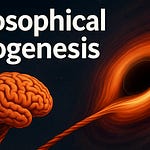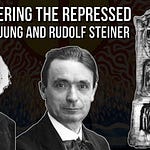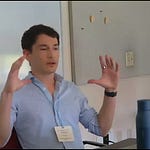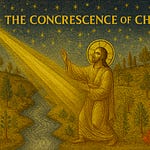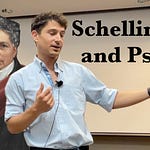“In one sense philosophy does nothing. It merely satisfies the entirely impractical craving to probe and adjust ideas which have been found adequate each in its special sphere of use. In the same way the ocean tides do nothing. Twice daily they beat upon the cliffs of continents and then retire. But have patience and look deeper; and you find that in the end whole continents of thought have been submerged by philosophic tides, and have been rebuilt in the depths awaiting emergence. The fate of humanity depends upon the ultimate continental faith by which it shapes its action, and this faith is in the end shaped by philosophy.”
-Alfred North Whitehead
(from “How is Natural Science Possible?”, his first lecture at Harvard University in September 1924)
Metaphysical speculation, and the invention of new concepts for the elucidation of practical experience (which Whitehead tells us is the “sole justification for any thought” [PR 4, 13]), may take thousands of years to become culturally effective, whether in politics, in science, in religion, or in art. New ideas can lay dormant for millennia before achieving full ingression into not only the deterritorialized imaginations of a few savants but the behavioral habits of whole civilizations. On the other hand, history is punctured by revolutionary disruptions in all four domains of free human expression (politics, science, religion, and art) when our common sense interpretations of experience (both social and individual) are transformed nearly overnight. Charles Hartshorne argued that Whitehead’s concept “prehension” took over two millennia to emerge in Western thought because of deeply entrenched bad habits of thought.
Meeting with Tim to discuss the metaphysical implications of Whitehead’s immaculate conception was not so much an escape from the political chaos of our times (which I admit I am struggling to comprehend), but rather an example of the value of practicing philosophy as a means of instigating a revolutionary transformation of the failed experiential hermeneutic responsible for the sorry state of our late modern so-called Western civilization. I’m reminded of some lines from Ralph Waldo Emerson, which I feel serve as a neat preamble for my summary below of the discussion Tim and I had about Hartshorne’s article, "Whitehead's Revolutionary Concept of Prehension." I’ll provide a little context for why I have that feeling, but hopefully the relevance of his reflections becomes clearer by the end of this post. How we understand our own times depends ultimately on how we understand the nature of time itself. For Emerson and other panentheists (like Hartshorne, Whitehead, Peirce, Schelling), understanding the nature of time also means understanding the nature of the soul, of personhood. The idea is that temporal process as a whole has a personal character. In Augustine’s terms, time is a distentio animi, or a stretching of the soul across the trinity of tenses. Without the threefold relationality of soul there is no time. Time (as creative advance or as the sort of living growth characteristic of ensouled creatures) is not a series of separate instants stacked against one another like a line of deterministic dominoes. Instead, time emerges from the asymmetrical prehensive relations stitching together varying intensities of the mostly unconscious memory, perception, and imagination active in even the lowliest actual occasions. Whitehead’s revolutionary move is to interpret causality itself in terms of feeling: every event is shaped by the feelings transmitted from the world it arises out of, even if those feelings do not rise to the level of consciousness. It seems that only in the higher animals and in humans does unconscious prehension (whether physical or conceptual) become conscious propositional prehension. While there was time before and will be time after each occasional subject of experience (ie, in Whitehead’s terms, in addition to present subjects there are past objects and future superjects), space-time is a relational affair, an ongoing composition, a self-organizing network of prehensions with—at least for panentheists—a rather persuasively (super)personal and yet radically distributed underlying character. Here’s Emerson:
“The Times are the masquerade of the eternities; trivial to the dull, tokens of noble and majestic agents to the wise; the receptacle in which the Past leaves its history; the quarry out of which the genius of to-day is building up the Future. The Times — the nations, manners, institutions, opinions, votes, are to be studied as omens, as sacred leaves, whereon a weighty sense is inscribed, if we have the wit and the love to search it out. Nature itself seems to propound to us this topic, and to invite us to explore the meaning of the conspicuous facts of the day. Everything that is popular, it has been said, deserves the attention of the philosopher: and this for the obvious reason, that although it may not be of any worth in itself, yet it characterizes the people. … the subject of the Times is not an abstract question. We talk of the world, but we mean a few men and women. If you speak of the age, you mean your own platoon of people, as Milton and Dante painted in colossal their platoons, and called them Heaven and Hell. In our idea of progress, we do not go out of this personal picture. We do not think the sky will be bluer, or honey sweeter, or our climate more temperate, but only that our relation to our fellows will be simpler and happier. What is the reason to be given for this extreme attraction which persons have for us, but that they are the Age? they are the results of the Past; they are the heralds of the Future. They indicate, — these witty, suffering, blushing, intimidating figures of the only race in which there are individuals or changes, how far on the Fate has gone, and what it drives at.” (“Lecture on the Times,” December 1841)
After my expression of dizziness trying to keep up with the new White House, we jumped into the importance of philosophical concept creation. Tim was keen to reflect on the “blue sky” quality of speculative philosophy. As an evolutionary biologist, he can’t help but ask himself How could such an abstract notion as prehension ever make a difference in the lab? I’d say he came up with several good examples of its relevance as a description of evolutionary dynamics.
While process-relational philosophy might seem far removed from the day-to-day tasks of empirical research, it can transform how we conceptualize complex, relational systems in psychology, biology, and physics. As we discussed, the concept of prehension can help us reframe the local-global puzzle as well as the hard problem of consciousness.
Hartshorne’s classifies Whitehead as a “qualified pluralist.” Extreme pluralisms—like those of David Hume or Bertrand Russell—tend to reduce all relations to external relations, and so miss the subtle ways that novel events incorporate and transform their predecessors. Whitehead’s pluralism is different: every new actual occasion is internally related to its past, inheriting objective data from prior occasions, yet remains externally related and so open to the unrealized potential of the future.
Hartshorne emphasizes that prehension underpins both memory and perception. Memory is simply the present occasion inheriting the data of its own immediate personal lineage, whereas perception incorporates data from outside that lineage. There is no single enduring substance “remembering itself” by way of its identity with itself; rather, each new moment in a personal stream of experience prehends (i.e., inherits and transforms) the earlier moments. As for perception, it is by means of the “miracle of order” achieved by our animal bodies that
“the treasures of the past environment are poured into the living occasion. The final percipient route of occasions is perhaps some thread of happenings wandering in ‘empty’ space amid the interstices of the brain. It toils not, neither does it spin. It receives from the past; it lives in the present.” [Whitehead, PR 339].
One of the “bad mental habits” Hartshorne critiques is the pathetic anthropomorphic fallacy: the suspicion that any attribution of feeling or experience beyond the human domain must be a naïve projection. Both Hartshorne and Whitehead maintain that if we avoid specifically human feelings and stick to a more abstract definition of “feeling” or “experience,” we can see that nature itself must have some means of “grasping” or “prehending” its own past and the possibilities it affords for the future. This does not mean an atom has “human” consciousness or deliberative capacity.
If philosophers use “feeling” or “experience” too freely, people may imagine that elementary particles are having conscious thoughts. That is not what prehension implies. The concept is far more generic than our typical usage of “feeling.” Whitehead’s crucial distinction is between the how of experience (prehension) and the what of experience (consciously known propositional content). Most prehensions are transmitted unconsciously. Hartshorne claims that only God can prehend everything distinctly; in finite occasions of experience prehensions remain more or less vague.
In classical metaphysics, continuity was often conceived as a single underlying flow in which discrete particulars are illusory. Conversely, some pluralists see only discrete elements, with continuity explained away. Whitehead resolves this tension by showing how discrete “pulses” of becoming—actual occasions—generate continuity via their mutual but asymmetric perhensions. This redefines how novelty arises without lapsing into either a monistic Absolute (as in F. H. Bradley) or a purely external atomism (as in Russell).
While we were discussing Whitehead’s idea of a “becoming of continuity,” Tim recalled Whitehead’s remark about the “almost complete absence of intermediate forms” in biology. I agreed that Whitehead’s quip about the rarity of transitional forms is simply mistaken if taken at face value. Tim offered several biological examples showing abundant transitional states in fast-evolving lineages. Still, I believe Whitehead’s deeper insight is more about the structured backdrop of possibility—akin to how electrons can only occupy certain energy levels. Whitehead’s insistence on definite potentials doesn’t predetermine development or evolution, as if imposing rigid archetypes on self-determining actualities. Instead, his idea of conceptual prehensions of the graduated intensive relevance of eternal objects provides an infinitely abstract set of constraints that real historical processes continually reconfigure.
A core feature of prehension is the asymmetry between the determinate past and the vague future. Hartshorne, echoing Whitehead, asserts that past events necessarily condition the present—they are fully real—but they do not exhaustively determine it. The past is determinate without being determining of the present. This is because the present occasion prehends not only the already actualized past but also the unrealized possibilities available as alternatives for future becomings. Although Hartshorne himself questions the extent to which one needs a separate realm of “eternal objects,” he agrees that the vague potentialities of the future coax novelty out of the present.
Hartshorne questions whether Whitehead’s eternal objects are truly necessary to avoid the excesses of nominalism. Hartshorne proposes that physical prehensions alone might suffice, provided one includes God’s primordial valuation of possibility among our prehensions of the “past.” In this, Hartshorne claims to be less Platonist than Whitehead. But in Process and Reality [PR 249-250], Whitehead had already made a similar move.
Actual occasions are dipolar, with physical and mental poles. Whitehead describes the mental pole as itself having two phases, the first being “conceptual reproduction” of elements already given in the physical pole’s prehension of the past, thus preserving continuity. He then describes how novelty enters into a concrescing occasion through “conceptual reversion,” the second phase within the mental pole. The second phase introduces relevant alternatives—unrealized eternal objects that were not directly felt in the antecedent phase—thereby enriching the qualitative pattern and intensity of contrasts felt in the newly forming occasion. This process allows for creativity that is nonetheless constrained by the “ground of identity” derived from what was already given in the physical pole and reproduced in the first phase of the mental pole. By insisting on both a ground of identity and an aim at contrast, Whitehead maintains that every new synthesis retains continuity with its past while still leaving room for self-creation.
He then explains that, in strict alignment with the ontological principle (which holds that all real reasons must be found in actual entities), the deeper answer to how one unrealized eternal object can be more or less relevant than another to a given actual situation must be sought in God’s conceptual feelings. Conceptual alternatives do not simply float into our heads from nowhere; they come through the “hybrid physical feeling” by which God’s conceptual valuations of eternal objects is transmitted into an occasion’s concrescence. With that recognition, Whitehead effectively “abolishes” conceptual reversion as a standalone category, returning to the principle—shared with Hume—that all conceptual experience is derived from some form of physical experience, albeit now mediated by God’s own conceptual ordering of possibilities.
Hartshorne’s argument here is thus not all that different from Whitehead’s (it is possible, of course, that Whitehead was led to abruptly abolish his category of conceptual reversion on page 250 of Process and Reality precisely because of conversations he’d had with Hartshorne). Tim wondered how this logic might line up with a more secular perspective. After all, Whitehead himself admonishes us to secularize the concept of God’s functions in the world [PR 207]. In my view, Whitehead’s introduction of God is not a matter of religious worship but a philosophical attempt to make good on the ontological principle—every real potential has to be prehended by an actual entity. For Whitehead, the everlasting macrocosmic concrescence is that entity. Nevertheless, the theological dimension in Whitehead need not be read as identical with classical theism. God is not to be treated as a ruling Caesar or ruthless moralist, but as an ideal lure toward future harmonies uniquely tailored to the local spatiotemporal condition of each occasion.
Hartshorne explicitly introduces God as the one who is worshipped because regarded as “unsurpassably excellent,” whereas Whitehead states that his philosophical concept of God does not necessarily involve religious feeling. Although I appreciate Hartshorne’s more personal, confessionally oriented language, it is important to note that Whitehead was wary of conflating his philosophical depiction of the macrocosmic creative process with the God worshipped by religion. He wanted a concept that explains how universal potentials are always already woven into particular actualities, thus avoiding the implication that potentials lie in wait in some lifeless heavenly freezer. The net result is a dipolar divine function that includes both a “primordial” valuation of possibility and a “consequent” integration of every new achievement of actuality. Whether or not one invokes the term “God,” the operational schema or diagram of relations remains.
Bad Habits
Hartshorne lays out sixteen habits of thought (comprehensive list below)—from the dominance of subject-predicate grammar and substance-thinking, to the fear of anthropomorphism and determinism—that repeatedly blocked the kind of asymmetric, creative-relational insight Whitehead provides with his concept of prehension. Tim and I noted several that remain relevant to science:
Determinism: The common assumption that cause and effect must be symmetrical, stifling any serious account of novelty.
Anthropophobia: The dread of reading anything akin to feeling into nature, which ironically yields an anthropocentric stance.
Nominalism: Overzealous denial of real potentialities.
Hume’s axiom: Confusing distinction with separation, thus missing how events can be distinguished without being externally divided.
Hartshorne sees Whitehead’s concept of prehension as the breakthrough that transcends these habits: it allows us to think internal relations without falling into a monistic absolute; to see feeling as an essentially relational notion not limited to human consciousness; to accommodate novelty within a lawful/habit-forming but not deterministic cosmos; and to hold a genuinely open future.
The concept of prehension and its attendant process-relational ontology does not solve all questions, nor does it promise an immediate revamping of laboratory protocols. But it can reshape our underlying assumptions about what causation is, how novelty arises, and how value might permeate the living world. Hartshorne’s reading of Whitehead shows that philosophy’s “blue sky” can shed light on the details of scientific practice, illuminating new paths of inquiry for generations to come—no matter how chaotic tomorrow’s news cycle might be.
“…the actual world, in so far as it is a community of entities which are settled, actual, and already become, conditions and limits the potentiality for creativeness beyond itself. This ‘given’ world provides determinate data in the form of those objectifications of themselves which the characters of its actual entities can provide. This is a limitation laid upon the general potentiality provided by eternal objects, considered merely in respect to the generality of their natures. Thus, relatively to any actual entity, there is a ‘given’ world of settled actual entities and a ‘real’ potentiality, which is the datum for creativeness beyond that standpoint. This datum, which is the primary phase in the process constituting an actual entity, is nothing else than the actual world itself in its character of a possibility for the process of being felt. This exemplifies the metaphysical principle that every ‘being’ is a potential for a ‘becoming.’ The actual world is the ‘objective content’ of each new creation.
Thus we have always to consider two meanings of potentiality: (a) the ‘general’ potentiality, which is the bundle of possibilities, mutually consistent or alternative, provided by the multiplicity of eternal objects, and (b) the ‘real’ potentiality, which is conditioned by the data provided by the actual world. General potentiality is absolute, and real potentiality is relative to some actual entity, taken as a standpoint whereby the actual world is defined. It must be remembered that the phrase ‘actual world’ is like ‘yesterday’ and ‘tomorrow,’ in that it alters its meaning according to standpoint. The actual world must always mean the community of all actual entities, including the primordial actual entity called ‘God’ and the temporal actual entities.”
[Whitehead, PR 65]
Hartshorne’s List of Sixteen Bad Habits of Thought
In his article, Hartshorne speculates about why it took Western philosophy millennia to develop a concept as useful and elucidating as prehension. He identifies sixteen “bad mental habits” that blocked prior philosophers from fully articulating Whitehead’s insight:
Subject-predicate grammar and the neglect of relative predicates.
Choosing a thing-ontology over an event-ontology.
Overreliance on common sense and ordinary language to settle profound metaphysical questions.
Fascination with symmetry in logic and mathematics, leading to false assumptions about symmetrical relations in reality.
The alleged simultaneous identity of perceiver with perceived, memory with data, and mind with body.
Determinism, or the symmetrical pairing of cause and effect.
Hume’s axiom that to distinguish is to separate (failure to see that we can “distinguish without dividing”).
The idea of a continuity of becoming, rather than a becoming of continuity.
Confusions of the given with the known-to-be-given, memory with known-to-be-remembered, and so on.
Belief in a neutral, emotionless qualia, instead of seeing prehensions as always clothed in emotion and purpose (subjective form and subjective aim).
The theory of mind as inextended, which sets up incoherent positions like dualism or materialism.
Anthropophobia or the dread of anthropomorphism—denying any analogy between human experience and more general forms of feeling in nature.
God as an unmoved mover, outside time, rather than as a fellow sufferer or participant who prehends and is prehended by the world.
The assumption that time is timeless, or that truth is timeless, negating genuine novelty.
Nominalism, taken too far to deny real potentialities or universals of any kind.
A non-intentional, non-modal logic, ignoring the real openness of the future.
Hartshorne contends that Whitehead overcame many of these difficulties by introducing prehension. Even so, Hartshorne believes that, with his doctrine of eternal objects, Whitehead overcorrected for nominalism. Nonetheless, Whitehead remains, in Hartshorne’s estimation, the thinker who most systematically broke through the confusions that had prevented earlier philosophers from conceiving the world as an ever-evolving network of momentary acts of (mostly) blind perceptivity.






